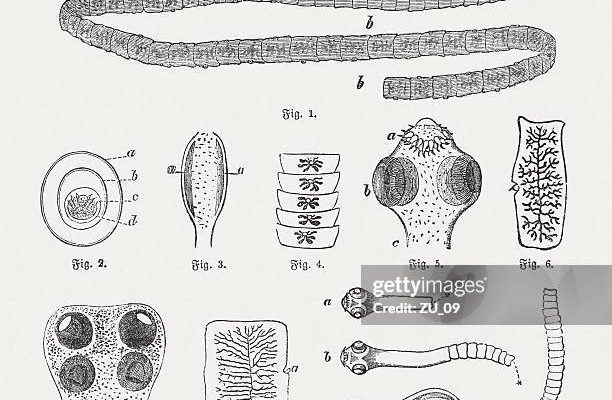
Think of guppy tapeworms as the behind-the-scenes crew of a stage production. While the guppies are the star performers, tapeworms set the backdrop and influence the show in ways we can only begin to grasp. Field studies on their seasonal behavior help scientists understand how changes in temperature, food availability, and water conditions affect these parasites. This knowledge can shed light on broader ecological patterns as well.
Understanding Guppy Tapeworms
To kick things off, let’s dive a bit deeper into what guppy tapeworms actually are. These are flat, segmented parasites scientifically known as *Bothriocephalus* spp., which can inhabit the intestines of guppies and other freshwater fish. They thrive by absorbing nutrients from their host, often compromising the fish’s health. Imagine a squatter taking up residence in your home; it often leaves the real occupants struggling to manage their resources.
You might be wondering how these worms get into guppies in the first place. Typically, they enter through infected food, such as small crustaceans. Once they’re in, they can grow to remarkable lengths, often leading to malnutrition in their hosts. In healthy environments, guppies can fend off these parasites, but if conditions are right, tapeworm populations can spike dramatically.
One of the more interesting aspects of guppy tapeworms is their ability to reproduce. They often produce thousands of eggs, which can be released into the water, ready to infect new hosts. Understanding these reproduction rates is crucial for managing guppy populations in aquariums and natural settings. If conditions allow for a sudden increase in guppy tapeworms, it can lead to significant health issues for guppy populations.
What Influences Seasonal Behavior?
The behavior of guppy tapeworms isn’t static; it shifts with the seasons. Factors like temperature, water quality, and availability of host fish can alter their life cycles dramatically. Take temperature, for instance. Just like you might crave a hot cup of coffee on a chilly day, tapeworms also thrive at certain temperatures. Warmer waters often promote faster reproduction and growth rates for these parasites.
Seasonal changes also affect the availability of food sources for guppies. During spring and summer, aquatic environments are typically rich in nutrients, which benefits both guppies and their tapeworms. However, as seasons shift into fall and winter, food becomes scarcer, which can impact the health of guppies and subsequently their tapeworms. It’s a ripple effect—change one part of the ecosystem, and everything else feels the impact.
Additionally, environmental conditions such as water clarity and pollution can also shape the behavior of guppy tapeworms. Polluted waters can make it harder for guppies to thrive, leading to an increased likelihood of disease and parasitic infections. Understanding these patterns can empower fish breeders and hobbyists to create healthier environments for their aquatic friends.
Field Studies: Observations and Findings
Field studies on guppy tapeworms have yielded some captivating observations. For instance, researchers have noted increased tapeworm prevalence during warmer months. In tropical regions where water temperatures remain stable, tapeworm infestations can peak, causing health issues for local guppy populations. It’s as if the warmer weather becomes an all-you-can-eat buffet for the tapeworms, while the guppies struggle to keep up.
In one study, scientists collected samples over the course of a year from various freshwater sites. They found that during the rainy season, when water levels rose and created a nutrient-rich environment, tapeworm populations surged. This indicates that not only do tapeworms thrive in warmer temperatures, but they also flourish in nutrient-heavy waters.
Moreover, researchers observed that as winter approached, the populations of both guppies and tapeworms took a dive. This seasonal decline highlights the delicate balance of aquatic ecosystems, making it critical to monitor both fish and parasites as environmental conditions change. By observing these patterns, scientists can predict changes in guppy populations, leading to better management practices.
Implications for Ecosystem Health
So why does all of this matter? The seasonal behavior patterns of guppy tapeworms can serve as a significant indicator of overall aquatic ecosystem health. If tapeworm populations are out of control, it might signal problems in the environment—like pollution or changes in biodiversity. Essentially, these tiny parasites can be the canaries in the coal mine for the aquatic world.
For instance, if a decline in guppy populations is noted alongside a spike in tapeworm numbers, it could suggest that something is wrong. Perhaps there’s a lack of food, or maybe pollutants are stressing the fish. Monitoring these patterns can help conservationists take action before more significant problems arise.
Moreover, understanding the life cycles and seasonal behaviors of guppy tapeworms can assist fish breeders and aquarium enthusiasts in managing their stocks better. By keeping an eye on environmental conditions and tapeworm populations, they can ensure the health and longevity of their guppy fish.
Managing Guppy Tapeworms in Aquariums
If you’re an aquarium enthusiast, you might be concerned about how to keep tapeworms in check. Here are some strategies you can employ:
- Regular Water Changes: Keeping water clean is crucial. Regular changes can help control nutrient levels and reduce the likelihood of tapeworm infestations.
- Monitor Temperature: Since tapeworms thrive in warmer waters, keeping your aquarium at a consistent and healthy temperature for guppies can help.
- Quarantine New Fish: Always quarantine new additions to your tank. This prevents introducing potential tapeworms or other parasites.
- Feed Wisely: Providing a balanced diet can help keep your guppies strong and better equipped to handle parasites.
Staying vigilant and proactive can make a significant difference in the health of your aquarium.
Future Directions in Research
The study of guppy tapeworms is still evolving, with many exciting avenues for future research. Scientists are exploring how climate change might impact water temperatures and, subsequently, tapeworm behaviors. Will warmer waters lead to more severe infestations? How might pollution levels change these dynamics?
Another fascinating area of research involves understanding the evolutionary aspects of this parasitism. How have guppy tapeworms adapted over the years to thrive in various environments? What does this mean for their survival in changing ecosystems? As we delve deeper into these questions, we open the door to better management strategies for both guppies and their tapeworms.
In conclusion, the seasonal behavior patterns of guppy tapeworms provide crucial insights into aquatic ecosystems. By understanding these patterns, hobbyists and researchers alike can better manage guppy populations and contribute to the health of our waterways. It’s a complex web of relationships, but one that serves as a reminder of how interconnected life can be—right down to the smallest organisms. So, whether you’re a beginner or a seasoned expert, keeping an eye on these patterns can lead to a thriving aquatic environment.

